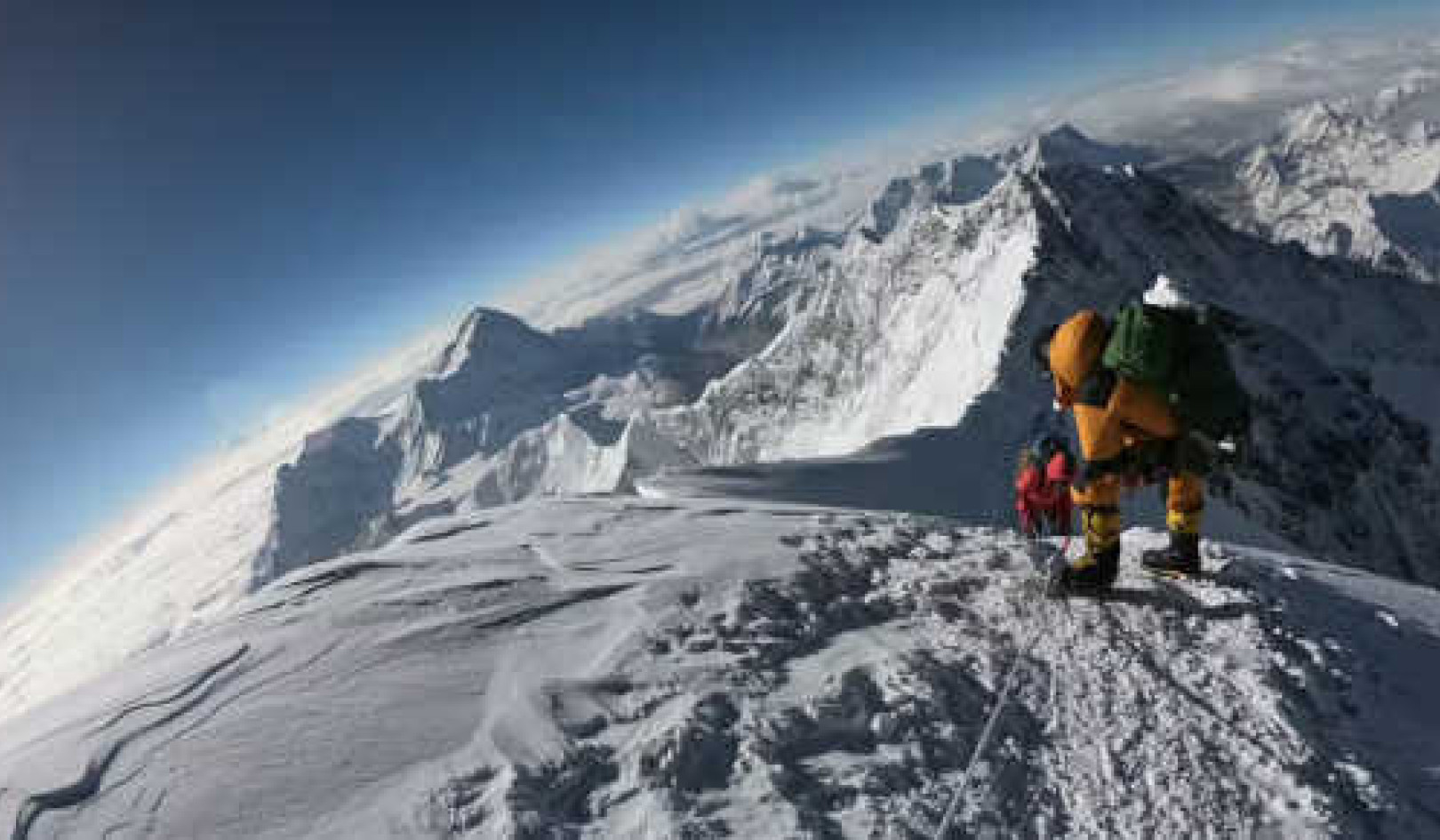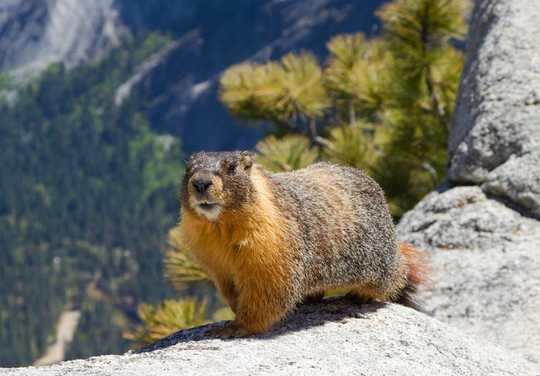 Yellow-bellied marmots are a North American species of ground squirrel. Fremme/Shutterstock
Yellow-bellied marmots are a North American species of ground squirrel. Fremme/Shutterstock
The UK’s weather did a somersault in the first half of 2020, as the wettest February on record gave way to the sunniest spring. Climate change has warped the environmental conditions that might be considered normal, creating progressively weirder seasons that cause havoc for society. Longer, drier summers increase the risk of crop failure and fires, floods engulf homes, and less winter snowfall and earlier thaws threaten freshwater supplies.
But how do animals cope? Many species have evolved life cycles and strategies for coping with the seasons over millions of years, particularly those in temperate to arctic and alpine environments. Here, seasonal variability is large and predictable. Short and mild summers produce bursts of vegetation and food, the perfect time to give birth to young that can forage to develop their fitness. Long, harsh winters when food is scarce have shaped animals to largely depend on fat reserves for energy, and in extreme cases, to hibernate or migrate.
But as species come to inhabit seasons that no longer resemble those they evolved in, their chances of survival are governed less by their own careful adaptations, and more by the capricious weather. For species eking out an existence in seasonal climates, winter and summer produce distinct challenges of their own.
Climate change and seasonal survival
In new research, we explored how yellow-bellied marmots in the Colorado Rocky Mountains have responded to climate change. Since the 1970s, every marmot pup born at the study site has been marked, and its life followed year after year.
Marmots are large, burrowing ground squirrels, and they have a distinct seasonal life cycle, with a four-month period during the spring and summer when they’re active and need to gain weight by foraging on plants, and an eight-month period of hibernation during autumn and winter. Marmots, like other burrowing and herbivorous mammals, help shape important habitats and serve as prey for many predators.
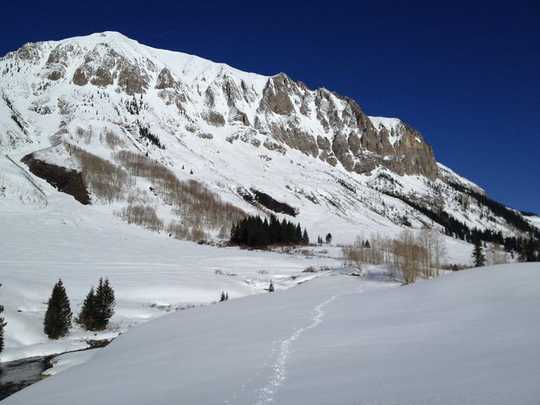 The study site on arrival – thick snow as far as the eye can see. Line Cordes, Author provided
The study site on arrival – thick snow as far as the eye can see. Line Cordes, Author provided
When I first arrived at the alpine field station in April, I was amazed by the thick layer of snow that reached the roofs of the small wooden cabins dotted around the town of Gothic, named after Gothic Mountain which looms above it. But spring set in and the snow melted, and by midsummer, wildflowers transformed the valley floor.
Climate records painted a gloomier picture, though. Over the past 40 years, winters have warmed by between two and four degrees Celsius on average, while annual snowfall has declined by three and a half metres. Summers have warmed by two degrees Celsius, lengthened by about 50 days and changed from predominantly wet to predominantly dry.
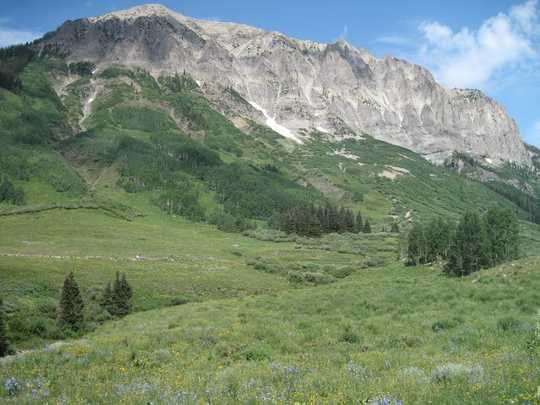 Summer is warmer, longer and earlier each year. Line Cordes, Author provided
Summer is warmer, longer and earlier each year. Line Cordes, Author provided
During this time, the chance of marmots surviving a summer has increased, but the chance of surviving the winter hibernation has decreased. The biggest changes in seasonal survival have been noted among younger age classes (the pups and one-year-olds).
We found that lower winter survival tended to be the result of conditions during the previous summer, when heat and drought likely reduced foraging conditions for marmots, leaving them in poor stead for hibernation.
Whether a marmot survived a summer depended on conditions in both seasons. Pups were more likely to survive the summer if it followed a winter with low snowfall. This was most likely because the mothers of these pups were in better condition as forage plants became available sooner after hibernation.
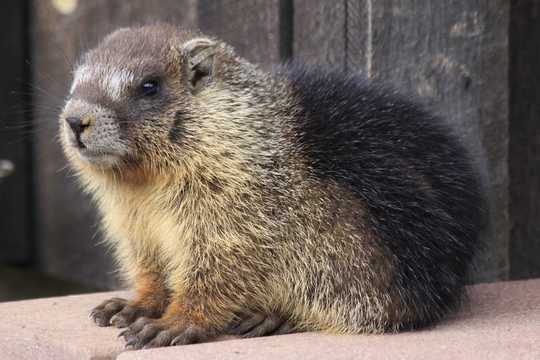 A marmot pup. Graeme Shannon, Author provided
A marmot pup. Graeme Shannon, Author provided
Unexpectedly, one-year-olds survived better when summers were longer and warmer. It may be that yearlings with their smaller body size are less prone to heat stress compared to adults. Nevertheless, we suspect that their resilience may not last as summers continue to warm and become drier.
Simply focusing on the survival of a species over the entire year may disguise these more dramatic seasonal responses to climate change, lulling us into a false sense of security. And contrasting seasonal responses don’t necessarily cancel each other out. For the marmots, the net change over the year was negative for pups, positive for yearlings, while there was no change for adults.The fact that climate change can result in beneficial conditions in one season, and difficult conditions in another has potentially wide-ranging consequences for the persistence of species occupying temperate to more extreme habitats, such as deserts, mountains and polar regions, where the most rapid changes in climate are being observed. Similar findings have emerged from other species around the world, from meerkats in the Kalahari Desert to bighorn sheep in the Canadian Rocky Mountains.
For wildlife living near the poles or near mountain tops, like marmots, there is nowhere to go when conditions slide further and further from optimal.
About The Author
Line Cordes, Lecturer in Marine Population Ecology, Bangor University
This article is republished from The Conversation under a Creative Commons license. Read the original article.
Books on The Environment from Amazon's Best Sellers list
"Silent Spring"
by Rachel Carson
This classic book is a landmark in the history of environmentalism, drawing attention to the harmful effects of pesticides and their impact on the natural world. Carson's work helped to inspire the modern environmental movement and remains relevant today, as we continue to grapple with the challenges of environmental health.
Click for more info or to order
"The Uninhabitable Earth: Life After Warming"
by David Wallace-Wells
In this book, David Wallace-Wells offers a stark warning about the devastating effects of climate change and the urgent need to address this global crisis. The book draws on scientific research and real-world examples to provide a sobering look at the future we face if we fail to take action.
Click for more info or to order
"The Hidden Life of Trees: What They Feel, How They Communicate?Discoveries from A Secret World"
by Peter Wohlleben
In this book, Peter Wohlleben explores the fascinating world of trees and their role in the ecosystem. The book draws on scientific research and Wohlleben's own experiences as a forester to offer insights into the complex ways that trees interact with one another and the natural world.
Click for more info or to order
"Our House Is on Fire: Scenes of a Family and a Planet in Crisis"
by Greta Thunberg, Svante Thunberg, and Malena Ernman
In this book, climate activist Greta Thunberg and her family offer a personal account of their journey to raise awareness about the urgent need to address climate change. The book provides a powerful and moving account of the challenges we face and the need for action.
Click for more info or to order
"The Sixth Extinction: An Unnatural History"
by Elizabeth Kolbert
In this book, Elizabeth Kolbert explores the ongoing mass extinction of species caused by human activity, drawing on scientific research and real-world examples to provide a sobering look at the impact of human activity on the natural world. The book offers a compelling call to action to protect the diversity of life on Earth.



















